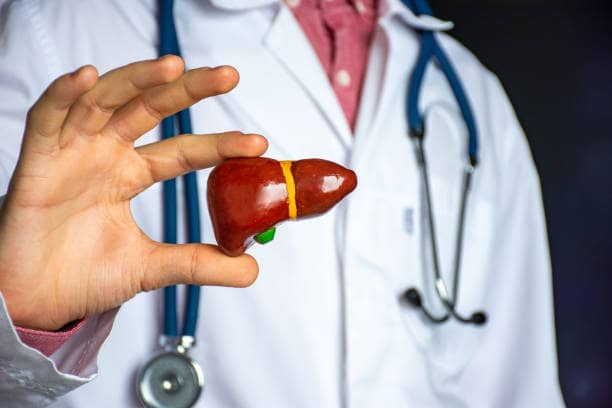Sacroiliac SI Joint Pain is a common yet often misunderstood condition that can significantly impact an individual’s quality of life. The SI joints, located in the pelvis, connect the sacrum (the triangular bone at the base of the spine) to the ilium (the large, wing-shaped bone of the pelvis). These joints play a crucial role in providing stability and transmitting forces between the upper body and the lower extremities. When the SI joint becomes dysfunctional or painful,make Sacroiliac SI Joint Pain it can lead to discomfort, mobility issues, and a decreased quality of life.
Causes of SI Joint Pain
- Trauma and Injury: One of the primary causes of SI joint pain is trauma or injury, often resulting from accidents or falls. A sudden impact to the pelvis can disrupt the normal alignment and function of the SI joint, leading to pain and dysfunction.
- Arthritis: Arthritis can affect the SI joint, leading to inflammation and pain. Ankylosing spondylitis and psoriatic arthritis are two types of inflammatory arthritis that commonly involve the SI joint and hence it cause Sacroiliac SI Joint Pain.

- Pregnancy: During pregnancy, hormonal changes can loosen the ligaments around the SI joint in preparation for childbirth. While this is a natural process, it can lead to Sacroiliac SI Joint Pain in some women.
- Degeneration: Like other joints in the body, the SI joint can degenerate over time. This can result in pain and stiffness, especially in older adults and cause Sacroiliac SI Joint Pain.
- Infection: Though rare, infections in the SI joint can cause pain and discomfort. These infections typically occur as a result of bacteria entering the joint space.
Symptoms of SI Joint Pain
SI joint pain can manifest in various ways, making it challenging to diagnose. Common symptoms include:
- Lower Back Pain: Pain in the lower back, typically on one side, is a hallmark symptom of SI joint dysfunction. This pain may radiate into the buttocks, groin, or thigh.
- Hip Pain: SI joint pain can be mistaken for hip pain, as the two are anatomically close. It’s crucial for healthcare providers to differentiate between the two to provide appropriate treatment.
- Pain with Movement: Activities that involve bending, lifting, or twisting often exacerbate SI joint pain. Climbing stairs or standing for extended periods can also be painful.
- Pain While Sitting: Sitting for prolonged periods may worsen SI joint pain, making it difficult for individuals to engage in sedentary activities.
- Leg Length Discrepancy: SI joint dysfunction can sometimes result in a perceived leg length discrepancy due to muscle imbalances and altered gait patterns.
Diagnosing SI Joint Pain
Diagnosing Sacroiliac SI Joint Pain can be challenging due to its similarity to other musculoskeletal conditions. A comprehensive evaluation by a healthcare provider is essential. Diagnostic methods may include:
- Medical History: Your healthcare provider will take a detailed medical history, including any recent injuries, medical conditions, and medications.
- Physical Examination: A physical examination will assess your range of motion, tenderness, and any structural abnormalities in the SI joint area.
- Imaging: X-rays, MRI scans, and CT scans can provide valuable information about the SI joint’s structure and any potential abnormalities.
- Diagnostic Injections: In some cases, a diagnostic injection of local anesthetic into the SI joint can help confirm the source of pain. If pain relief occurs after the injection, it suggests the SI joint as the pain generator.
Treatment Options for Sacroiliac SI Joint Pain
- Conservative Management: Many individuals with SI joint pain find relief through conservative measures, including rest, physical therapy, and the use of non-steroidal anti-inflammatory drugs.
- Physical Therapy: A physical therapist can develop a tailored exercise program to improve SI joint stability, strength, and flexibility. This may include stretching and strengthening exercises.
- Orthotics: Custom orthotic inserts can help address any gait abnormalities that may contribute to SI joint pain by providing better alignment and support.
- SI Joint Belt: A sacroiliac joint belt can provide compression and support to the SI joint, reducing pain and stabilizing the area during daily activities.
- Medications: In some cases, healthcare providers may recommend medications such as muscle relaxants or corticosteroid injections to manage pain and inflammation.
- Minimally Invasive Procedures: If conservative measures fail, minimally invasive procedures like SI joint injections or radiofrequency ablation may be considered to provide longer-lasting pain relief.
- Surgery: Surgical intervention for SI joint pain is typically considered a last resort when all other treatments have failed. Fusion of the SI joint is an option to stabilize the joint permanently.
Living with Sacroiliac SI Joint Pain
Managing SI joint pain often requires ongoing self-care and lifestyle adjustments. Here are some tips for living with SI joint pain:
- Maintain a Healthy Weight: Excess body weight can put additional stress on the SI joint. Maintaining a healthy weight can help reduce pain and inflammation.
- Stay Active: Engaging in low-impact exercises like swimming, walking, and cycling can help maintain joint mobility and reduce pain.
- Ergonomics: Pay attention to your posture and ergonomics, both at work and home. Proper body mechanics can alleviate stress on the SI joint.
- Heat and Cold Therapy: Applying heat or cold packs to the affected area can provide temporary relief from pain and inflammation.
Conclusion
Sacroiliac (SI) joint pain is a common condition that can significantly impact an individual’s quality of life. Understanding the causes, symptoms, diagnosis, and treatment options is crucial for managing this condition effectively. If you suspect you have Sacroiliac SI Joint Pain, consult with a healthcare provider who can provide a tailored treatment plan to help you regain your mobility and improve your overall well-being.








Juliana Carrillo